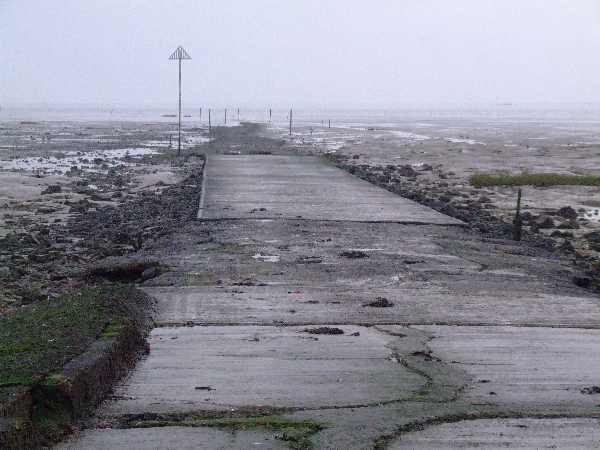 Until last week, I’d never heard of the Broomway. Now I long to walk it.
Until last week, I’d never heard of the Broomway. Now I long to walk it.
The Broomway is a paradox: a path through the ocean, a six-century-old walkway that disappears each day. It begins on the southeastern coast of England and heads straight out to sea, crossing about three miles of sand and mudflats until it washes up on a marshy island called, picturesquely and appropriately, Foulness.
Known as the deadliest path in Britain, its walkers have been swept away by tides, lost in thick white fog, and stuck in sucking mud when they strayed from the Broomway’s relatively stable ground. Accounts of Broomway adventures lean heavily on moonless nights and crab-nibbled corpses.
The Broomway sounds wet, cold, anxiety-provoking and muddy, and it’s not steep or scenic or exotic enough to make for an impressive story afterwards. But still: yes. Robert Macfarlane, whose charming essay about his own Broomway walk appears in Granta and in his recent book The Old Ways, describes the odd appeal of walking over ancient coastlines and into the “mirror-world” of the tidal flats.
Everywhere I looked were pivot points and fulcrums, symmetries and proliferations: the thorax points of a winged world. Sand mimicked water, water mimicked sand and the air duplicated the textures of both. Hinged cuckoo calls; razor shells and cockleshells; our own reflections; a profusion of suns; the glide of transparent over solid.
I’ve long been drawn to extreme, marginal landscapes, the edges of climates and continents: icefields, swamps, deserts, mudflats, you name it. The less traditionally beautiful, the better. Maybe it’s just frustrated hipsterism, a reflexive loyalty to places other people don’t want. But I like to think it’s something more. Maybe it’s the sense of awe that comes from wide horizons, or the hallucinatory Ganzfeld effect created by monotone fields of vision. (Toward the end of his walk, Macfarlane sees Viking longboats and the skyline of Istanbul rising from the mist. I’ll take that.)
Or maybe it’s the sheer strangeness of these places, a kind of humdrum, even ugly strangeness that can shock us out of ourselves. Macfarlane calls them “xenotopias” — landscapes, near and far, that are “outlandish or quickened” in a way that both startles and settles our distracted minds.
At the end of his walk, Macfarlane returns to the solid shore, picks up his abandoned sneakers, and reenters the real and present world. But his xenotopian adventure lingers, shimmering around him like the light of the coast. “We walked out of … whichever country it was that we had discovered that day, off the mirror and onto the sea wall,” he writes. “For days afterwards I felt calm, level, shining, sand-flat.”
See you on the Broomway.
Photo: The Broomway’s beginning at the Wakering Stairs. Wikimedia Commons.
One thought on “The Xenotopian Impulse”
Comments are closed.